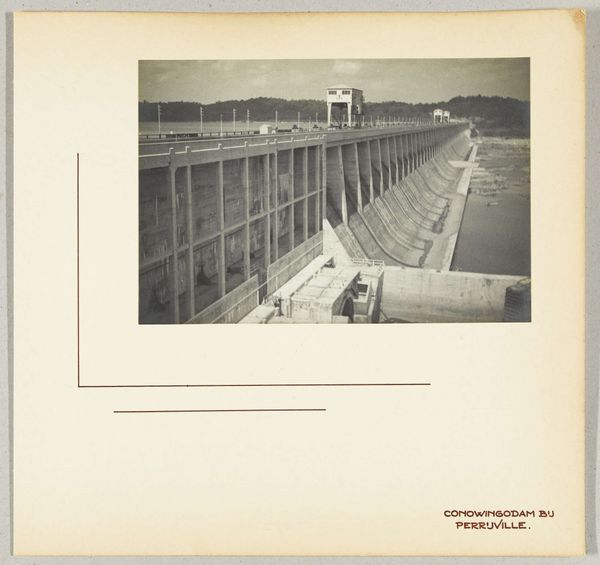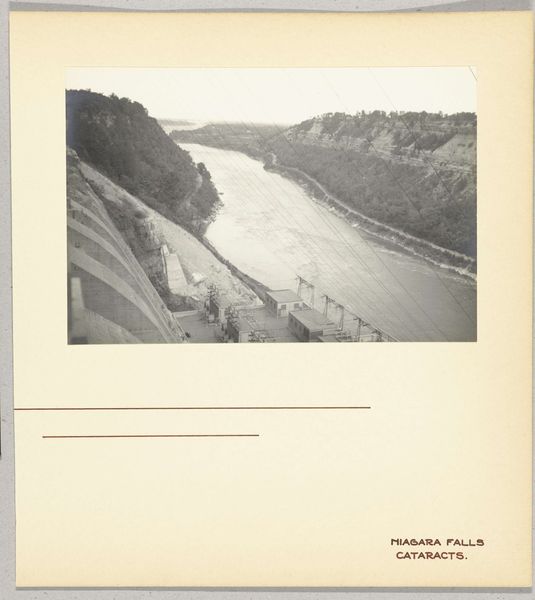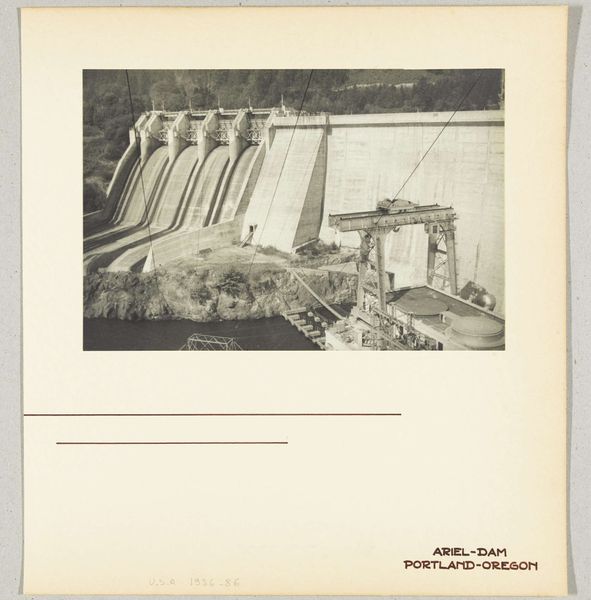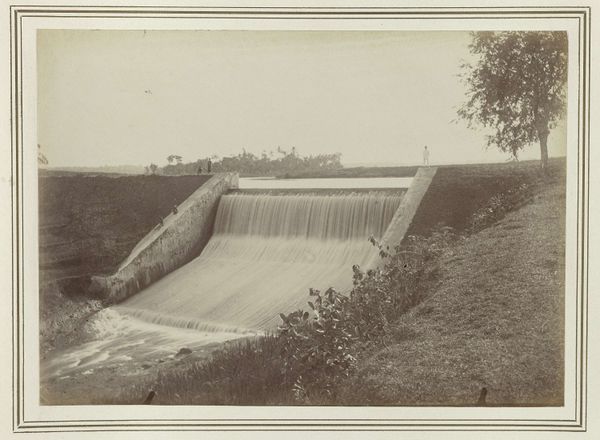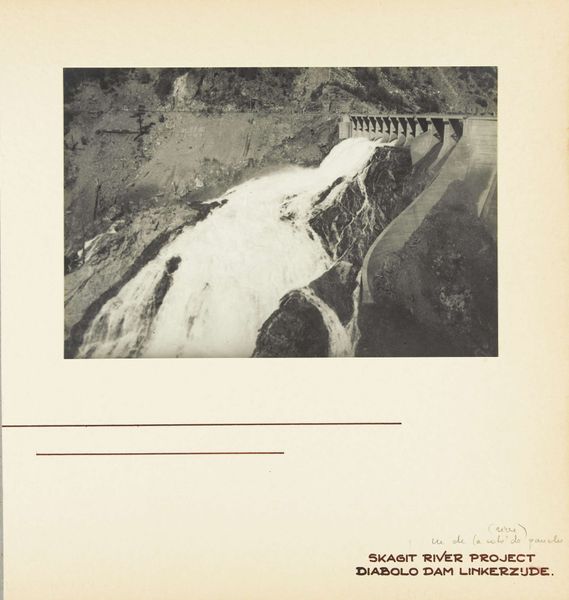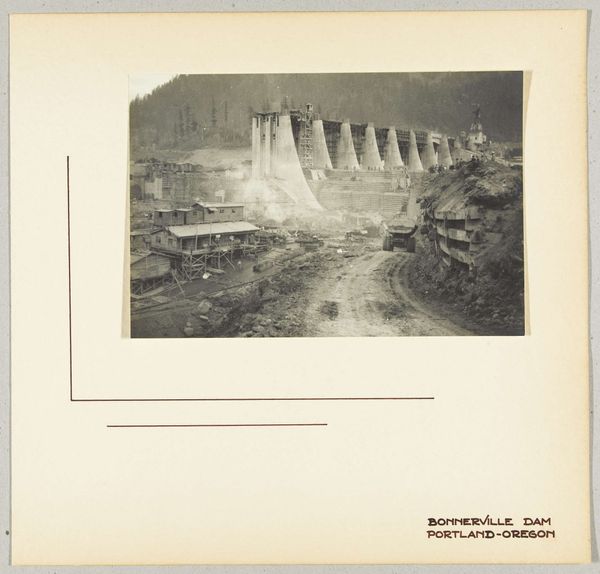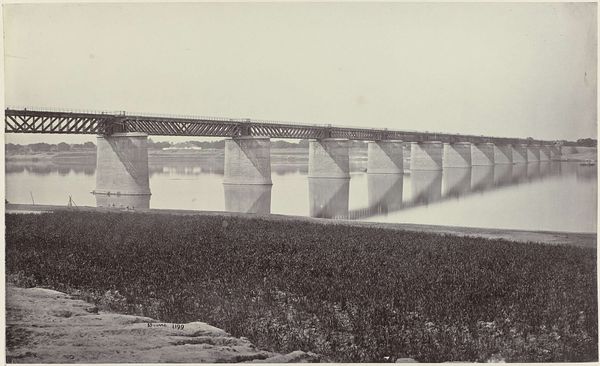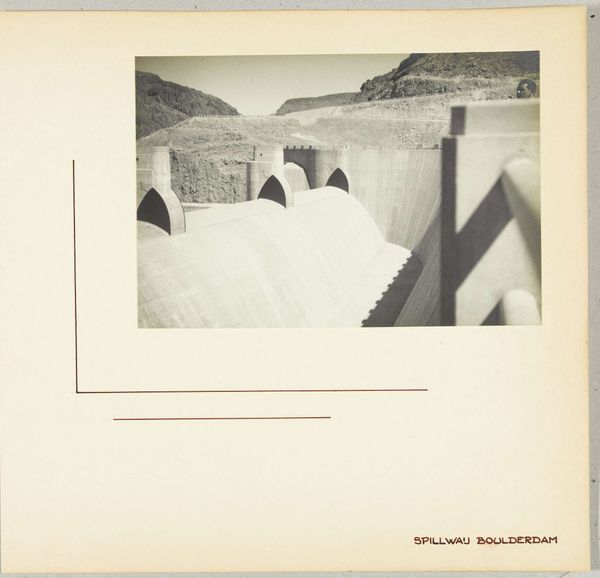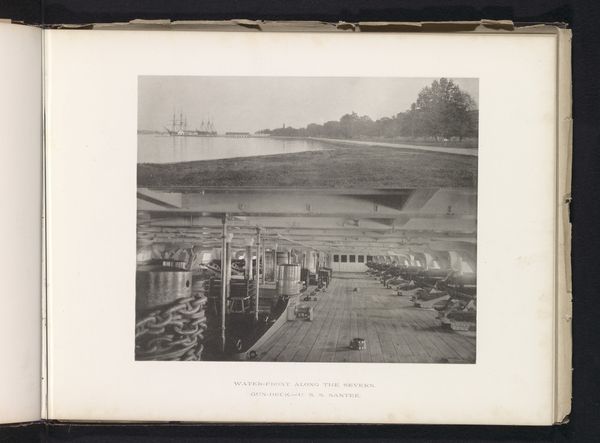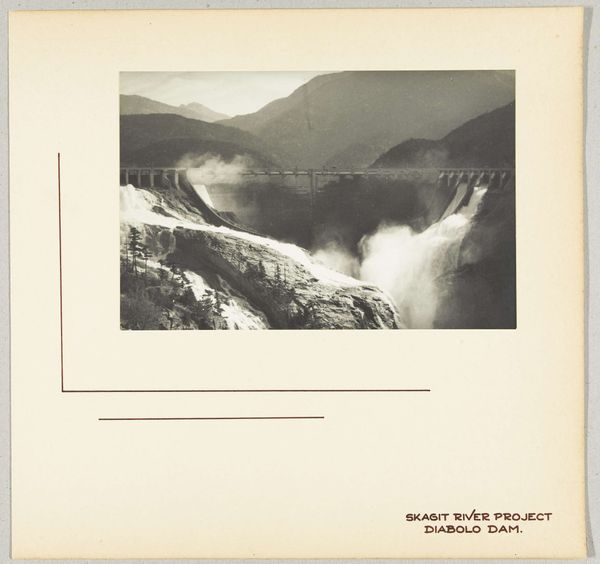
print, photography
# print
#
landscape
#
photography
#
geometric
#
cityscape
#
modernism
#
realism
Dimensions: height 153 mm, width 228 mm, height 315 mm, width 330 mm
Copyright: Rijks Museum: Open Domain
Wouter Cool captured the Bonnerville Dam in Portland, Oregon, during its construction with a gelatin silver print. The image invites us to consider the role of monumental architecture in shaping both physical landscapes and social ideologies during the early to mid-20th century. Here, Cool presents a feat of engineering, the dam, as a symbol of progress and control over nature. Made in the USA, we need to look at the historical context of the New Deal era, when large-scale public works projects were undertaken to stimulate the economy and project an image of national strength during the Great Depression. The dam also raises questions about the displacement of communities, and the environmental impacts of altering natural river systems. To fully understand Cool’s photograph, one might consult archives, government documents related to the New Deal, and local histories of the region. By analyzing the social and institutional context, we can better understand how Cool’s image reflects and reinforces ideas about progress, and the complex relationship between humanity and the natural world.
Comments
No comments
Be the first to comment and join the conversation on the ultimate creative platform.
